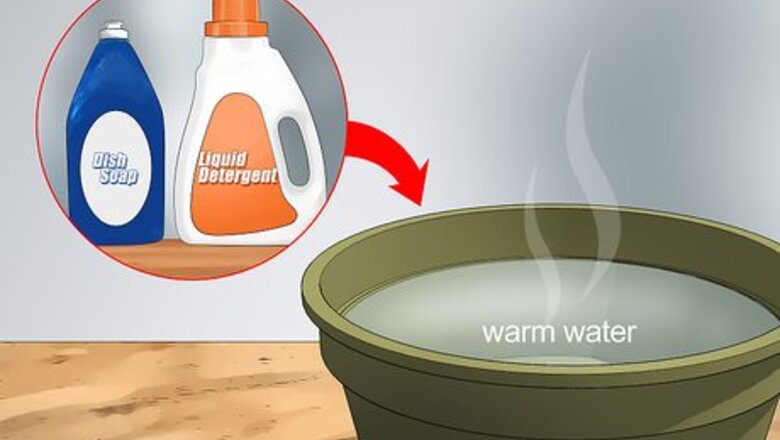
views
Washing the Stain with Soap

Mix dish soap, laundry detergent, and warm water in a bowl. Stir the mix slowly to prevent excess bubbles. If the stain is on your face, use unscented dish soap without the laundry detergent added. The ratio of laundry detergent, dish soap, and water depends on how sensitive your skin is and how difficult the stain is to remove. Use a larger amount of laundry detergent if you do not have sensitive skin, or if the stain is particularly difficult to remove. If you have sensitive skin, you should probably only use dish soap. You might want to water down your mixture significantly.
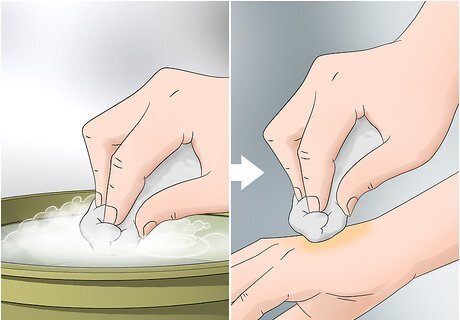
Use a towel or brush to scrub the stain with the soap mixture. Cover your brush or towel in the mixture and rub it against the stain on your skin. Reapply your mixture to the brush or towel regularly. Soap mixtures will likely only remove wood stain that has very recently gotten on your skin. Act quickly to avoid having to use products that are harsher on the skin. If you towel is absorbing the stain, switch to an unstained section of the towel before you continue scrubbing.
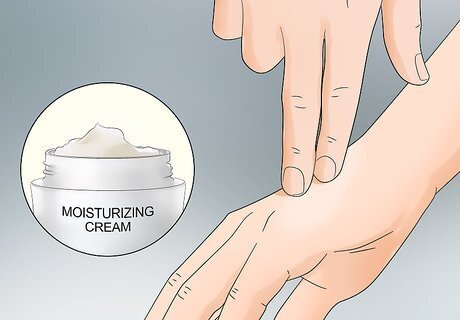
Moisturize your skin after removing the wood stain. Run the affected skin under some lukewarm or cool water. Apply moisturizing creams or lotion to help repair the damage the soap and scrubbing may have caused.
Getting Rid of an Oil-Based Wood Stain
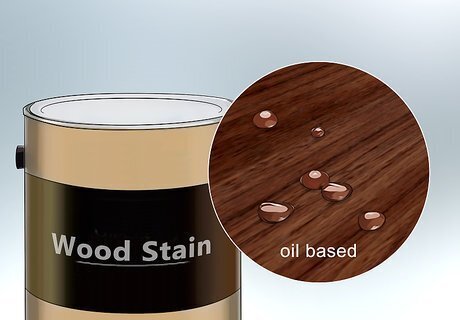
Find out if your wood stain is oil-based. The original wood stain container should tell you if the product is oil-based. You can test if a wood stain is oil based by putting a few drops of water on stained wood. If the water beads, it is an oil-based wood stain.
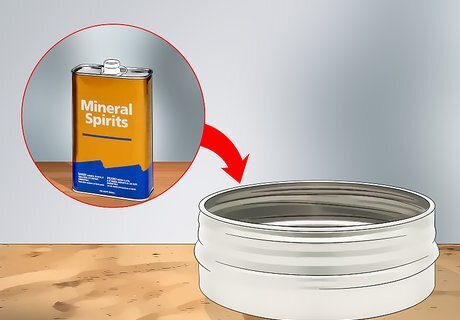
Pour mineral spirits into a small metal bowl. Mineral spirits are widely available in hardware stores. Many mineral spirits are generically labeled as paint thinner, although not all types of paint thinner are mineral spirits. Make sure that the container you pour the mineral spirits in is not painted or coated in varnish. Use caution when working with mineral spirits. They are highly flammable and their fumes are toxic.
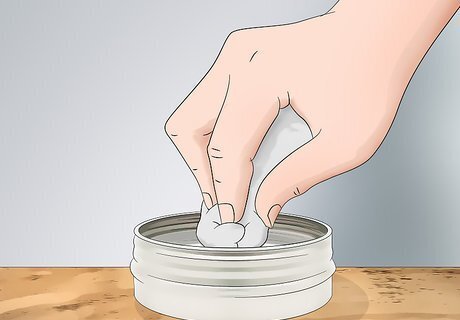
Dip a white cloth into the bowl of mineral spirits. It will be easier to tell if the stain is being removed if you use a white, clean piece of cloth. If the section of the cloth you are using starts to stain, switch to a clean section or use a new cloth.
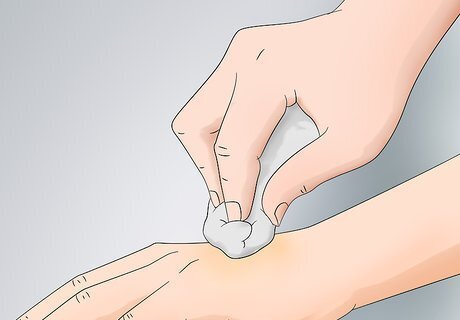
Rub the stain with the mineral spirit soaked cloth. Gently blot the entire stain with the mineral spirits and then lightly rub the cloth against the stain. Start from the outside and work toward the middle of the stain. Continue this process until the stain has been removed from your skin. If your cloth becomes stained, that means it is working. Switch to a clean part of your cloth so that it will continue to soak up the wood stain.
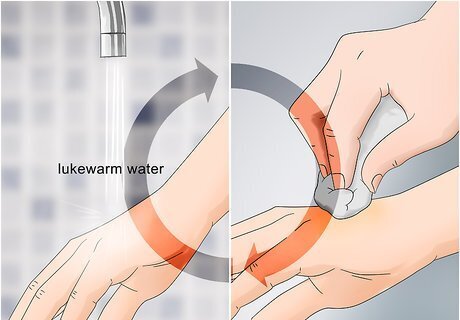
Flush the stain regularly with lukewarm water as you are rubbing it. You should rinse off the mineral spirits every few minutes as you rub them against the stain. Mineral spirits are made to strip paint from hard surfaces like wood or metal. Mineral spirits can cause burns and severe irritation on your skin if they are not quickly removed.
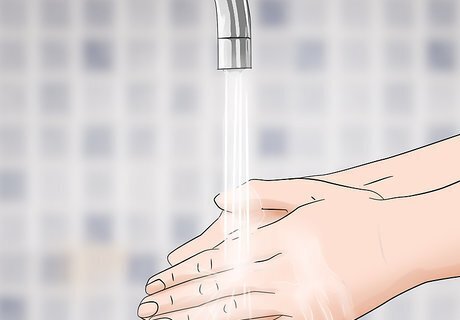
Rinse your skin thoroughly with warm water. You must take extra care to make sure the mineral spirits are no longer on your skin because they can cause burns and damage. If your skin is not sensitive and does not appear to be irritated, you could also use normal soap to clean the area. If you use soap, rinse it off when you are finished. Using a moisturizing cream or lotion can help prevent skin irritation and damage. Apply it after you have washed and rinsed your skin.
Removing Water-Based Wood Stain

Check if your wood stain is water-based. If you have the original wood stain container, it should tell you on the label. If not, rub the stain with a cotton ball with some rubbing alcohol on it. If the cotton ball gets stain on it, then you probably have a water-based wood stain.
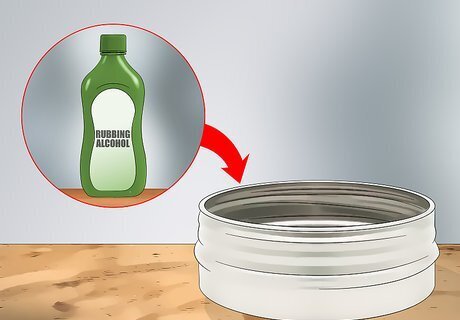
Pour rubbing alcohol or acetone into a small metal bowl. Both chemicals can help remove a stain, but they can also be very hard on your skin. Rubbing alcohol is less damaging, but will not remove stains as quickly or as efficiently as acetone. Acetone is commonly used in many nail polish removers. Buying acetone-based nail polish remover is usually the easiest and cheapest way to get acetone for stain removal.
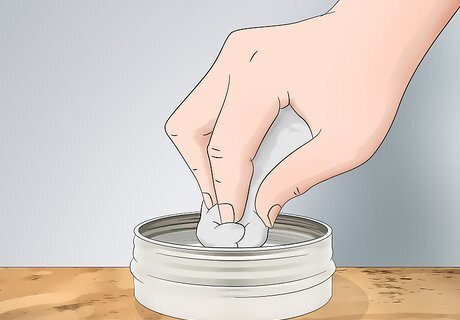
Dip a white cloth or rag into the bowl of alcohol or acetone. You will want a white, clean piece of cloth so that you can tell if the stain is being removed. Only use a corner of the cloth so that you can rotate to a clean portion once the cloth begins to soak up the stain.

Rub the soaked cloth against the stain. Pat the entire stain with soaked cloth and then rub the cloth against the stain. Start from the outside of the stain and work toward the center. Continue to blot and rub the stain with the cloth until the stain is removed. When the part of the cloth you are using becomes stained, switch to a part that is still clean. If the stain is particularly big or difficult to remove, you might need a few towels or rags to finish the job.
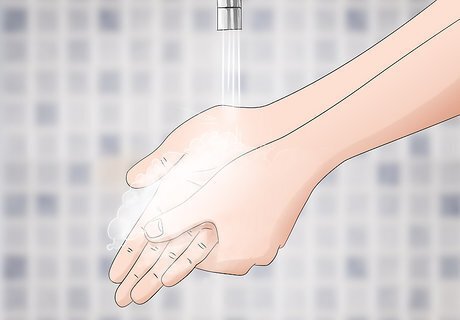
Clean your skin with soap and water. Rinse your skin with lukewarm water to remove the alcohol or acetone. Use a bit of normal soap to clean the area that was stained. After your skin is clean, rinse the soap off with warm water. If the alcohol or acetone has irritated your skin, you should rinse it thoroughly with lukewarm water, but you might want to avoid using soap on it until the skin has had a chance to rest and repair. You can also use some moisturizing cream or lotion to help soothe and repair your skin after you have cleaned it. This can help prevent skin irritation and damage.













Comments
0 comment